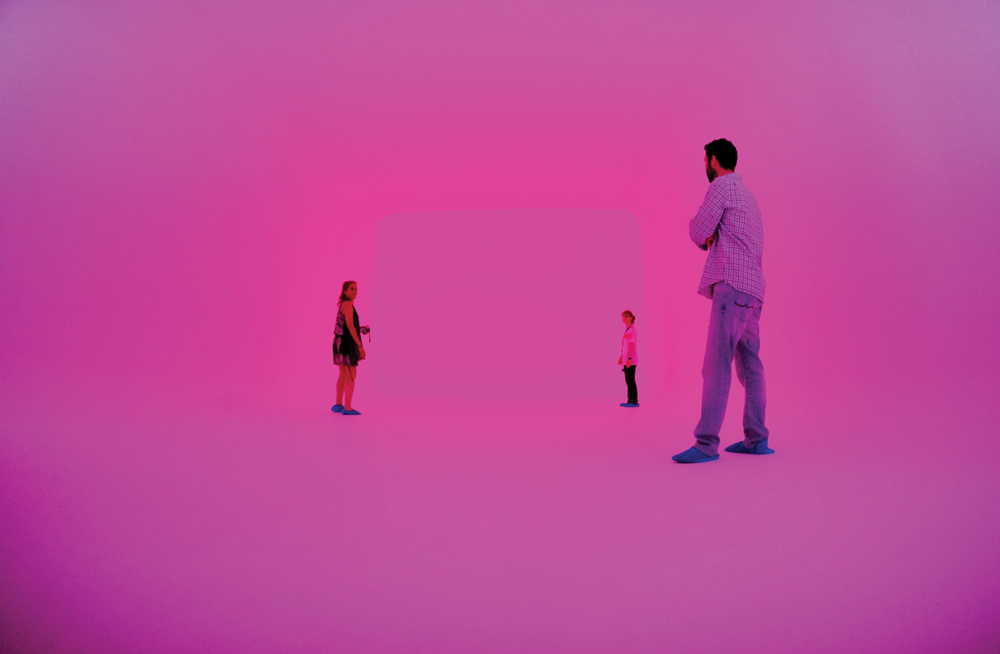This isn't actually the one from LACMA, but an almost identical exhibition by Turrell. I chose it because I think it shows a bit on how it affects depth perception. The article that goes with it is really interesting and definitely worth a read if you're interested in this exhibit.
Metropolis II is a huge kinematic racetrack, with dozens of toy race cars continually zooming to the end of the track and being lifted back to the beginning.
Video about Metropolis II
Me and some of my sorority sisters at Metropolis II
To me, these exhibits represented situations where art and science are inseparable. Breathing Light related to visual presentation and perspective, more specific how technology allows us to create spectacular visual effects in film. One example is in filming The Lord of the Rings trilogy, where they used multiple cameras and scaling sets to make the proportions of the actors correct. This application of technology to enhance visual presentation is similar to the vanishing point and golden ratio we learned about week 2. Metropolis II made me think of architecture, where the primary focus is of course creating a safe building, but almost as important is the building's aesthetic. Architecture is an interesting type of art in that it is created to serve a practical purpose, but can hold artistic value equivalent to that of a painting, sculpture, symphony, more 'traditional' forms of art. Other similar examples are cars, furniture, computer hardware. LACMA definitely wasn't what I was expecting, and was really engaging and informative. There are many places where art and science converge, and I think this class really showed me how art doesn't have to fall solely in the realm of humanities, but can be just as scientific as engineering or medicine.
Sources:
Burden, Chris. "Metropolis II at LACMA." YouTube. Debitification, 29 Jan. 2012. Web. 7 June 2015.
Gayford, Martin. "Enlightened Spaces." MIT Technology Review. MIT Technology Review, 19 Apr. 2014. Web. 7 June 2015.


No comments:
Post a Comment